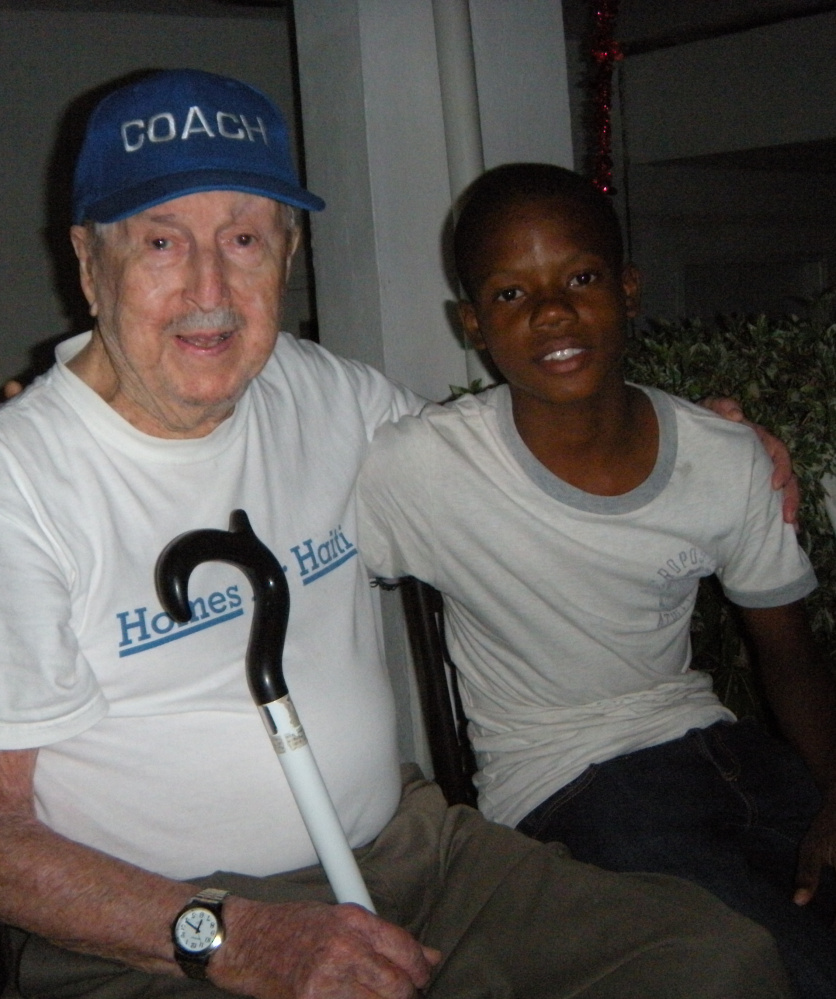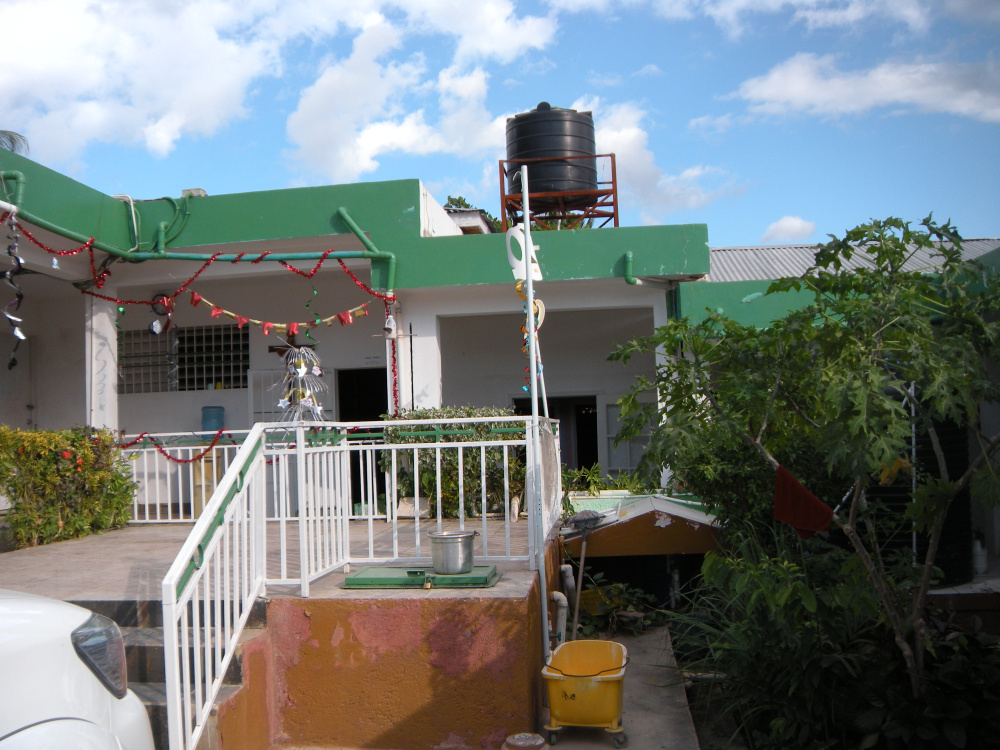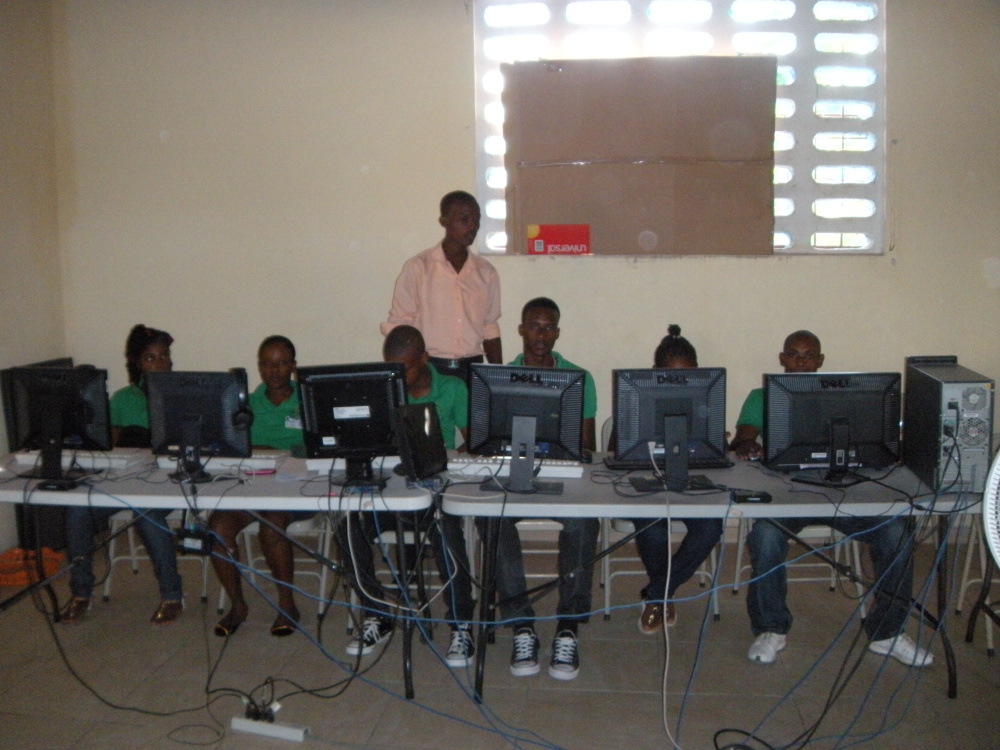WATERVILLE — During our lives, we cross paths with various individuals. Some linger in our minds, prompting questions that need answers, and the desire to share their stories tugs at our heartstrings, not allowing us to disengage. I have one of those stories, crying out to be told.
What moves a legally blind, nearly deaf, 97-year-old man with prostate cancer to travel to Haiti to ease the suffering of the poor?
I first had the pleasure of meeting Coleman “Coley” and Anna Gorham of Portland as their foot care nurse. I learned about their work in Haiti, and I went there with Coley in January.
The Gorhams’ kindness and generosity have touched the lives of people in the poorest country in the Western Hemisphere. Believing that everything happens for a reason, I feel that I’ve been chosen to be their storyteller.
FOCUSING ON EDUCATION
It began 18 years ago. After watching a video about Haiti, Coley was compelled to fly there. He visited orphanages, schools, churches and the slums of Cité Soleil.
Standing behind a chain link fence, with fingers clutching the wires, stood several barefoot children wearing soiled T-shirts, their eyes focused on the school Coley was visiting.
With sadness in his voice, Coley said he knew what they were thinking: “Why can’t I go to that school?” (Almost all schools in Haiti are privately run; they usually require tuition fees, putting education out of reach for hundreds of thousands of children.) That was when he knew his work in Haiti had just begun. “I could not turn my back on those children,” he said.
As a retired educator and builder, Coley had the desire, know-how and funds to do projects in Haiti. He began at St. Joseph’s orphanage in Port-au-Prince, where he constructed a computer lab. In Jacmel, he completed a partially built orphanage and bought an adjacent lot for recreation. Following the earthquake of 2010, he made major repairs to 108 homes; all received concrete floors and tin roofs.
He went on to Charlier, on the outskirts of Petite Rivière de Nippes, and built a church on a high promontory overlooking the Caribbean. In Ti Rivière, as it’s known, he purchased some land and built 33 homes for the homeless. Each family received a water purification kit and the deed to their new home.
It was also in Ti Rivière that Coley built a free public eight-room school known as St. Patrick Youth Center, with six classrooms, an apartment for the director and a dormitory to house eight guests.
CONNECTING KIDS TO THE WORLD
With no access to electricity or running water, he had to install solar panels and devise a system that traps rainwater off the roof and channels it to gutters and downspouts, then to a large underground cistern. The water is pumped to a storage tank on the roof, from which it flows to meet the needs of the school.
The school has 30 computers used to teach students the English language with Rosetta Stone software. The goal is to have them become fluent, allowing them to pursue further education through sources like Khan Academy, which offers free high school and college-level courses online.
Though over 40 young adults have completed the English program at St. Patrick, Coley has expressed concern about the school’s future. He’d hoped that a Haitian university would take it over, but that has not happened. Now he envisions a Peace Corps-type system, run by a U.S. nonprofit, in which motivated college graduates teach at St. Patrick alongside local educators.
During our stay at the school in January, I met many students. I couldn’t help but notice the love they felt toward Coley. They came by daily to pay him a visit. He was always quick to give them a short educational lesson. With great respect, they would gather around, listening to the man they refer to as their “father” and “friend.”
Coley says that we in the U.S. have little awareness of the poverty in countries like Haiti. Without seeing it, one can never fully comprehend the magnitude of their desperation. He says if more people would watch videos of daily life on the streets of Haiti, it would have a profound effect on how they see the world.
UNDETERRED BY ILLNESS, HARD WORK
Through his journey, Coley has been hospitalized with malaria, heat prostration, intestinal infection and cellulitis, but that has not deterred him. Coley’s work began in 1998 and continues today. When asked how he could give so freely, he said, “I don’t see it as my money. I am only a steward.”
The Gorhams laughed when asked how their mission had personally affected them. “We have a tiger by the tail,” said Coley, “and for fear that it might devour us, we have not dared to let it go.”
By the time this column is published, Coley will be 98 years old, still hanging on to the tiger’s tail, and still hoping that an outside group will partner with the St. Patrick school and set it on firm ground for the future.
— Special to the Telegram
Send questions/comments to the editors.





Comments are no longer available on this story